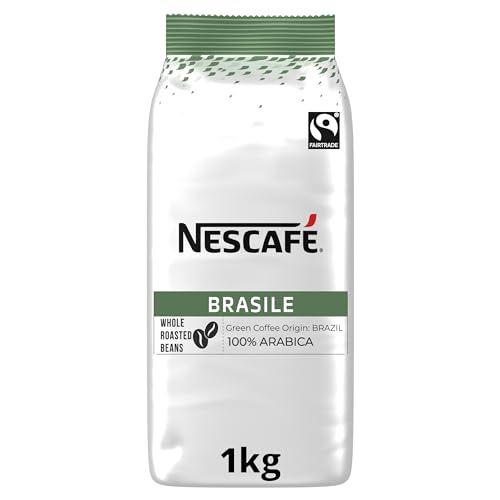You'll Never Guess This Pure Arabica Coffee Beans's Tricks
페이지 정보

본문
Pure Arabica Coffee Beans
Coffee lovers adore the sweet and soft taste of pure arabica beans. These delicate beans are best suited for medium or light roasts that will preserve their natural flavors without burning them.
 These plants thrive in the coffee belt, which stretches between the Tropic of Cancer and the Tropic of Capricorn. The two most popular varieties are Typica and Bourbon.
These plants thrive in the coffee belt, which stretches between the Tropic of Cancer and the Tropic of Capricorn. The two most popular varieties are Typica and Bourbon.
Origin
Pure arabica coffee beans are cultivated in high-altitude areas of the world. They provide a smooth, soft taste with subtle flavor subtle nuances. They're ideal for filter coffee, French press, aero press, cold brew, moka pots and espresso machines. These coffee beans have been dry processed, which means that they're not fermented using water. This preserves the natural aroma and flavor. They're also low in caffeine, which makes them an ideal option for those who wish to avoid the negative effects that come with drinking too much coffee.
Coffea arabica is a kind of evergreen shrubs and small trees which are grown for drupes, which are then ground, roasted and used to create brewed espresso. Arabica beans account for 60% of the global coffee production, and nearly all coffee consumed. These beans are thought to be of higher quality and taste better than the more common Robusta coffee, which comes with more bitter and less tasty cup.
In the wild, the plants grow up to six meters in height and produce long beans that are light brown in color with central slits, which creates the distinctive S-shaped profile. The coffee plant is an evergreen tropical that grows best in full shade at elevations of more than 800 feet. It is also a delicate and sensitive plant that requires the subtropical climate to be cool and is easily damaged by insects and disease.
Due to its unique growth conditions, the Arabica plant produces various varieties and cultivars of coffee that have distinct aromas, tastes and flavors. Some of these varieties are more popular than others, while certain varieties are better suited to particular roasting styles. They include the Typica, Bourbon, and Caturra varieties.
In addition to genetics, external factors such as the terroir, the ripeness of the beans at harvest and drying, post-harvest processing, storage and roasting and brewing can all affect the flavor of the coffee. It takes a lot to prepare and serve great tasting coffee.
Taste
Pure arabica coffee beans are essential for true coffee lovers. They have more flavor and nuances, as well as caffeine than other varieties of coffee. They also have less acidity and bitterness. Additionally arabica beans contain more natural sugars and fats, making them a healthier alternative to other types of coffee. These qualities make arabica coffee the most sought-after coffee variety around the world.
The Arabica plant is a tropical evergreen tree (or small tree), is cultivated commercially for its seeds. These are roasted and ground into coffee. It is the most popular cultivar around the world, producing 60% of the world's coffee. It is regarded as superior to its closest relative Robusta (Coffeacanephora).
There are several different types of arabica beans. The differences are due to bean varieties, growing conditions or processing methods. Certain arabicas are characterized by a floral or citrusy flavor, while others are sour or chocolatey. The flavor profile of a particular type is determined by the area where it was grown. The soil, climate, and altitude of the area in which it was grown are key factors that affect the flavor.
One method to determine the flavor of a particular type of arabica will taste like is to look at its country of origin. Each country has a unique microclimate that affects the flavor of the coffee it produces. Coffee that is grown on the Big Island of Hawaii, for example, has a unique flavor that isn't found in any other place.
Coffee from Brazil is known for its fruity and mild flavors, while Costa Rica's coffee has a full-bodied taste that is low in acidity. Indonesia and Vietnam produce coffee that has a strong earthy taste. You can find a great coffee by experimenting with different types and regions.
The taste of Robusta is more bitter than arabica. It contains half the amount of caffeine and contains more natural sugars and fats. It also contains acrylamide which is a carcinogen that can be found in fried food items and potato chips. Although these levels are low, it's recommended to stay away from drinking excessive amounts of coffee.
Caffeine content
The amount of caffeine in a cup will differ according to how the coffee is prepared and the type of bean it contains. A typical 8-ounce cup of drip coffee will contain 100 to 150 milligrams. The beans used and the roasting process also play a role. In general, the coffee plants that produce arabica beans are less caffeine-rich than robusta plants.
Caffeine is a compound that is found in the seeds of the coffee plant. It is renowned for its energizing properties and has been used as a drug and stimulant since time immemorial. It is an effective natural pesticide that helps plants protect themselves from insects and diseases.
Pure arabica coffee is softer and more flavorful taste than other types. Its low levels of caffeine make it an excellent choice for those sensitive to the bitterness that can be associated with coffees that have a high caffeine content. Also, arabica beans have less tannins and acidic flavors that can cause digestive discomfort.
Due to these attributes, arabica can be blended with various types of beans to give different flavors. This is a method that is widely used to ensure that the consumer gets the perfect cup of coffee. Many specialty coffee producers, as well as retailers, are focused on sourcing arabica bean that is grown ethically. This includes fair trade arabica coffee beans wage for farmers, sustainable farming practices and organic certifications.
The final cup you enjoy will depend on the kind of coffee beans, roasting method and the amount of caffeine you feel comfortable consuming. The average cup of coffee brewed will contain about 200 milligrams of caffeine. It's about the same amount as a single estate arabica coffee beans shot of espresso or green tea. The majority of doctors advise that healthy adults consume up to 400 mg of caffeine daily. Women who are pregnant or nursing should consult their doctor before drinking coffee or any other caffeine-containing products. It is crucial to remember that caffeine in coffee works as a stimulant, not an antidiabetic.
Stores
Coffee is the most sought-after beverage in the world. It has many flavors and tastes. The flavor and aroma of coffee is influenced by many aspects, including the region, growing conditions processing techniques, and roast level. However, the key ingredient that determines the flavor is the beans themselves. The best coffee is made from arabica beans. These beans are renowned for having a mild taste of floral aromas, fruity flavors, and a lack of bitterness. The best arabica beans are high in antioxidants, and they are low caffeine levels.
In the last few years, the demand worldwide for arabica has grown dramatically. This has resulted in price fluctuations, as well as adjustments to instant coffee formulas. This demand growth has forced farmers to alter their cultivation practices to ensure that the beans they produce are able to meet this demand. Additionally, changes in the climate have affected coffee production worldwide. This mix of factors has resulted in the current state of the coffee industry where arabica beans are costly and scarce, yet in short supply.
Coffee is hydrophilic. This means that it absorbs moisture in the air. This moisture will affect its flavor and texture. This is why proper storage is crucial for a great cup of coffee. The temperature of the coffee should be between 70 and 85 degrees Fahrenheit. A higher temperature can cause the beans to lose flavor and texture.
Coffee should be kept in a dry and dark space. Keep it in a drawer or cabinet which doesn't contain any other products that create odors. It is also a good idea to store coffee in a container that is airtight. This will shield the beans from moisture, heat and light dark roast arabica coffee beans. Keep beans in a container that is airtight to keep them from becoming mouldy or musty. Gas-tight bags can also shield the beans from contamination and keep them fresher for longer. This can also preserve the delicate flavor. By following these tips, you will be able to ensure that you are getting the finest arabica coffee beans for your morning coffee.
Coffee lovers adore the sweet and soft taste of pure arabica beans. These delicate beans are best suited for medium or light roasts that will preserve their natural flavors without burning them.
 These plants thrive in the coffee belt, which stretches between the Tropic of Cancer and the Tropic of Capricorn. The two most popular varieties are Typica and Bourbon.
These plants thrive in the coffee belt, which stretches between the Tropic of Cancer and the Tropic of Capricorn. The two most popular varieties are Typica and Bourbon.Origin
Pure arabica coffee beans are cultivated in high-altitude areas of the world. They provide a smooth, soft taste with subtle flavor subtle nuances. They're ideal for filter coffee, French press, aero press, cold brew, moka pots and espresso machines. These coffee beans have been dry processed, which means that they're not fermented using water. This preserves the natural aroma and flavor. They're also low in caffeine, which makes them an ideal option for those who wish to avoid the negative effects that come with drinking too much coffee.
Coffea arabica is a kind of evergreen shrubs and small trees which are grown for drupes, which are then ground, roasted and used to create brewed espresso. Arabica beans account for 60% of the global coffee production, and nearly all coffee consumed. These beans are thought to be of higher quality and taste better than the more common Robusta coffee, which comes with more bitter and less tasty cup.
In the wild, the plants grow up to six meters in height and produce long beans that are light brown in color with central slits, which creates the distinctive S-shaped profile. The coffee plant is an evergreen tropical that grows best in full shade at elevations of more than 800 feet. It is also a delicate and sensitive plant that requires the subtropical climate to be cool and is easily damaged by insects and disease.
Due to its unique growth conditions, the Arabica plant produces various varieties and cultivars of coffee that have distinct aromas, tastes and flavors. Some of these varieties are more popular than others, while certain varieties are better suited to particular roasting styles. They include the Typica, Bourbon, and Caturra varieties.
In addition to genetics, external factors such as the terroir, the ripeness of the beans at harvest and drying, post-harvest processing, storage and roasting and brewing can all affect the flavor of the coffee. It takes a lot to prepare and serve great tasting coffee.
Taste
Pure arabica coffee beans are essential for true coffee lovers. They have more flavor and nuances, as well as caffeine than other varieties of coffee. They also have less acidity and bitterness. Additionally arabica beans contain more natural sugars and fats, making them a healthier alternative to other types of coffee. These qualities make arabica coffee the most sought-after coffee variety around the world.
The Arabica plant is a tropical evergreen tree (or small tree), is cultivated commercially for its seeds. These are roasted and ground into coffee. It is the most popular cultivar around the world, producing 60% of the world's coffee. It is regarded as superior to its closest relative Robusta (Coffeacanephora).
There are several different types of arabica beans. The differences are due to bean varieties, growing conditions or processing methods. Certain arabicas are characterized by a floral or citrusy flavor, while others are sour or chocolatey. The flavor profile of a particular type is determined by the area where it was grown. The soil, climate, and altitude of the area in which it was grown are key factors that affect the flavor.
One method to determine the flavor of a particular type of arabica will taste like is to look at its country of origin. Each country has a unique microclimate that affects the flavor of the coffee it produces. Coffee that is grown on the Big Island of Hawaii, for example, has a unique flavor that isn't found in any other place.
Coffee from Brazil is known for its fruity and mild flavors, while Costa Rica's coffee has a full-bodied taste that is low in acidity. Indonesia and Vietnam produce coffee that has a strong earthy taste. You can find a great coffee by experimenting with different types and regions.
The taste of Robusta is more bitter than arabica. It contains half the amount of caffeine and contains more natural sugars and fats. It also contains acrylamide which is a carcinogen that can be found in fried food items and potato chips. Although these levels are low, it's recommended to stay away from drinking excessive amounts of coffee.
Caffeine content
The amount of caffeine in a cup will differ according to how the coffee is prepared and the type of bean it contains. A typical 8-ounce cup of drip coffee will contain 100 to 150 milligrams. The beans used and the roasting process also play a role. In general, the coffee plants that produce arabica beans are less caffeine-rich than robusta plants.
Caffeine is a compound that is found in the seeds of the coffee plant. It is renowned for its energizing properties and has been used as a drug and stimulant since time immemorial. It is an effective natural pesticide that helps plants protect themselves from insects and diseases.
Pure arabica coffee is softer and more flavorful taste than other types. Its low levels of caffeine make it an excellent choice for those sensitive to the bitterness that can be associated with coffees that have a high caffeine content. Also, arabica beans have less tannins and acidic flavors that can cause digestive discomfort.
Due to these attributes, arabica can be blended with various types of beans to give different flavors. This is a method that is widely used to ensure that the consumer gets the perfect cup of coffee. Many specialty coffee producers, as well as retailers, are focused on sourcing arabica bean that is grown ethically. This includes fair trade arabica coffee beans wage for farmers, sustainable farming practices and organic certifications.
The final cup you enjoy will depend on the kind of coffee beans, roasting method and the amount of caffeine you feel comfortable consuming. The average cup of coffee brewed will contain about 200 milligrams of caffeine. It's about the same amount as a single estate arabica coffee beans shot of espresso or green tea. The majority of doctors advise that healthy adults consume up to 400 mg of caffeine daily. Women who are pregnant or nursing should consult their doctor before drinking coffee or any other caffeine-containing products. It is crucial to remember that caffeine in coffee works as a stimulant, not an antidiabetic.
Stores
Coffee is the most sought-after beverage in the world. It has many flavors and tastes. The flavor and aroma of coffee is influenced by many aspects, including the region, growing conditions processing techniques, and roast level. However, the key ingredient that determines the flavor is the beans themselves. The best coffee is made from arabica beans. These beans are renowned for having a mild taste of floral aromas, fruity flavors, and a lack of bitterness. The best arabica beans are high in antioxidants, and they are low caffeine levels.
In the last few years, the demand worldwide for arabica has grown dramatically. This has resulted in price fluctuations, as well as adjustments to instant coffee formulas. This demand growth has forced farmers to alter their cultivation practices to ensure that the beans they produce are able to meet this demand. Additionally, changes in the climate have affected coffee production worldwide. This mix of factors has resulted in the current state of the coffee industry where arabica beans are costly and scarce, yet in short supply.
Coffee is hydrophilic. This means that it absorbs moisture in the air. This moisture will affect its flavor and texture. This is why proper storage is crucial for a great cup of coffee. The temperature of the coffee should be between 70 and 85 degrees Fahrenheit. A higher temperature can cause the beans to lose flavor and texture.
Coffee should be kept in a dry and dark space. Keep it in a drawer or cabinet which doesn't contain any other products that create odors. It is also a good idea to store coffee in a container that is airtight. This will shield the beans from moisture, heat and light dark roast arabica coffee beans. Keep beans in a container that is airtight to keep them from becoming mouldy or musty. Gas-tight bags can also shield the beans from contamination and keep them fresher for longer. This can also preserve the delicate flavor. By following these tips, you will be able to ensure that you are getting the finest arabica coffee beans for your morning coffee.
- 이전글Seven Explanations On Why Stove Is Important 24.09.24
- 다음글10 Things Competitors Lean You On Auto Folding Travel Scooter 24.09.24
댓글목록
등록된 댓글이 없습니다.








